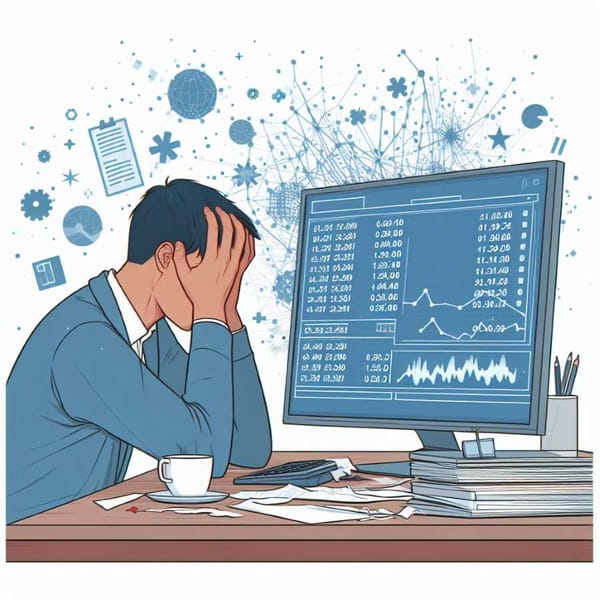Healthy consumption: consumer society and eating habits
Among the consumption decisions, there is healthy consumption, which aims to make consumers analyze the impact of food on their health.

What pushes us to change a traditional diet with little salt and fat for products that lead to overweight and obesity, from malnutrition to overeating? The present research work shows how people are facing a consumer society where consumerism is the common denominator, challenging rational decisions, which in principle would lead consumers to healthier foods, however, consumption habits have led them to affect their health day after day.
Healthy consumption has a direct impact not only on the individual sphere, but also on the social and, above all, the environmental sphere. It is surprising to analyze how companies seek, in the face of an aesthetic dictatorship, to produce only farm products that look "pretty" and for this reason, thousands of hectares are discarded, wasting to a great extent the natural resources used for their harvest.
Consumption decisions include healthy consumption, which seeks to make consumers analyze the repercussions of food on their health. Thus, using information, consumers can make better consumption decisions for their health, analyzing the consequences that consuming food high in fats, carbohydrates, sugars or salts can have on them.
Consumption and consumerism
Initially, consumption can be understood as an essential function for biological survival that human beings share with the rest of the living beings that need air, water, food, etc. It is an activity that is carried out to satisfy their needs. It is an activity carried out to satisfy biological, social, psychological, economic, and cultural needs.
On the other hand, consumption is not only related to the use of goods and services to satisfy these needs but is a much more complex process that these days - in the consumer society - has become the fundamental dynamic of all social relations. Given the above, the Polish sociologist Zygmunt Bauman defines the consumer (or consumer) society as: "a specific set of conditions of existence under which most men and women are very likely to adopt consumerism before any other culture, as well as (highly likely) to do almost always everything possible to follow its precepts".
The transition from consumption to consumerism occurs when consumption becomes fundamental in people's lives, that is, at the very end of their lives, "a moment when our capacity to want, to desire and to yearn, and especially our capacity to experience these emotions repeatedly, is the foundation of all economics of human relations".
Likewise, conventional economic theory stresses that individuals act rationally in their purchasing behavior, taking advantage of their utility as much as possible and basing their decisions on a hierarchy of tastes and preferences that seem to arise independently of any conditioning of the social environment. That is to say, people freely acquire what they like and need, without considering their family and social environment, etc.
However, the sociology of consumption highlights the economic, social, and cultural aspects as fundamental to understand the differential access to consumption. Thus, consumption determines an economic position and should even be considered as an element based on which individual and social identity is configured. Therefore, it must be concluded that individuals do not necessarily consume rationally.
Production and consumption, an ever-widening gap
Bauman emphasizes that the activities of consumption (production, storage, distribution, and disposal of objects of consumption) make up the immense diversity of life forms and their functioning and that the gap between production and the act of consumption is ever-widening. The threads that link those who produce and distribute goods and services form a complex web of connections between economic, social, political, and cultural organizations, diverse groups of people, and geographic locations.
The latter is particularly important in a globalized economy such as that of the 21st century, where the production process has been separated geographically to reduce production costs; a clear example is the manufacture of goods in an Asian country and their commercialization on the other side of the world.
Is it not common, in Mexico, to buy a garment made in Bangladesh or shirts made of Egyptian cotton or dried tomatoes from a European country or shoes handmade by children and adults in Asia, whose working conditions are minimal, and yet the shoes are also sold in exclusive stores in developed countries? These are just a few examples of the ever-widening gap between each of the activities of consumption that sociologist Bauman speaks of. Consumers are rarely aware of the social differences and conditions that exist to produce one product or another.
Therefore, consumers can contribute to the structural solution of social imbalances by ensuring that consumption decisions allow those who suffer from conditions of social injustice (hunger, poverty, labor exploitation, civic-political oppression, unhealthy and unsafe working conditions, etc.) to develop sustainable mechanisms for social reinsertion.
Responsible consumption
Every ethical action is interdependent. Although for analytical purposes an action can be divided into different spheres (an economic decision, a political mistake, etc.), ethics concerns the totality of the human being and the individual and social responsibility of each of his or her actions. In this sense, consumer actions have repercussions in all spheres of human life. When one chooses a polluting product, for example, it is not only the environment that is harmed, but most likely the health of the consumer and the rest of society as well.
Educating for sustainable consumption (understood as being responsible for the products we choose and the use we make of them, to reduce the effects on the environment) is absurd and useless if we separate the social and individual consequences and only emphasize the damage to nature. The same can be said of solidarity consumption -that which is focused on the effects of individual or group consumption decisions on others-, or healthy consumption -that which only focuses on the nutritional and physical-mental wellbeing consequences of consumption-. For all these reasons, it is preferable to educate in responsible consumption.
Responsible consumption emphasizes the interdependence of different types of consumption, based transversally on ethics and presupposing access to and critical understanding of information. Education in responsible consumption strengthens the importance of decision making and emotional intelligence; in this way, it is linked in a much more direct way with the new pedagogical paradigms that aim to achieve learning through experiences and the experiential sphere of the individual.
Education in responsible consumption is presented as an integral and interdependent process that begins with a critical attitude of searching for and interpreting information, continues with the identification of the individual, social and environmental consequences of consumption decisions, and culminates naturally with a proposed solution.
Responsible consumption is based on the premise that every act of consumption is preceded by an ethical decision, understood as one in which the individual assumes that each of his or her actions has a consequence and intends to choose the alternative that reduces the negative impacts and maximizes the positive ones. It also makes consumers aware of the need to consume responsibly, from the perspective of three major dimensions: individual, social and environmental.
Spheres of responsible consumption
Individual sphere: the consumer must be aware that each act of consumption affects or benefits the quality of life and the resources at his disposal (economic, time, etc.).
Social sphere: consumption is an eminently social activity and, therefore, the consequences necessarily transcend the individual sphere. In a market economy, moreover, the consumer encourages or censures suppliers by his decisions. They can also collaborate with others to achieve better consumption decisions.
Environmental sphere: Responsible consumption seeks to reduce negative impacts both in the extraction process (non-renewable natural resources, for example) and in the transformation and waste disposal process (reducing pollution, etc.).
Responsible consumption highlights the interdependence of various types of consumption and represents them as interlinked spheres of action. By choosing to adjectivize consumption with the word responsible, the act of consumption is transferred to the realm of ethics: that is, the consumer is held accountable for his or her consumption decisions. This article deals with the consequences of consumption in the individual sphere, particularly about healthy consumption.
Dictatorship of aesthetics
There are 870 million hungry people on the planet (FAO, 2012). One in eight people in the world goes to bed hungry every day. Particularly in sub-Saharan Africa and South Asia, more than 20,000 children die every day before the age of five. "Of this terrible and unacceptable tragedy, we are left, in general, with only a memory that hinders us, and we continue to live - with a kind of hidden but tolerable remorse - and to look at our children who, in general, overeat and worry us because they tend to obesity..." (Rossi, 2012). About one-third of food production for human consumption is lost or wasted worldwide: 1.3 billion tons per year.
Production surpluses, products close to expiration, fruits that do not grow or have grown too much, damaged packaging, broken guarantee seals, over-browned bread, and hundreds of other circumstances lead to food waste. In Spain, for example, 9 million tons of food are thrown away annually.
Meanwhile, in markets, supermarkets, greengrocers, bakeries, factories, farms, restaurants, and homes there is a surprising waste of food, which, it should be clarified, is not rotten or outdated food, but edible and fresh. In supermarkets alone, food products are thrown away because they want to give customers the impression - although it is false - that they can pick up any product. The reality is that even when they are in excellent condition, they do not meet the quality that companies choose. One of the main reasons why food is wasted is that "in food, there is a lot of dictatorship of aesthetics".
For a British carrot producer, a photographic sensor machine is indispensable for identifying carrots for aesthetic reasons: those that are not bright orange, the right size, are not straight or have cracks are left out. On average, half of the carrots do not pass the tests and are discarded for livestock feed. There is no way out, if the grower wants to sell his crop he must meet the strict standards demanded by the major British supermarket chain.
This is one of the countless ways in which food is lost and wasted in industrialized countries, where it is estimated at 95 to 115 kilos per capita per year, and one of the main causes of significant food wastage is the lack of planning when buying. In Mexico, more than 20 billion tons of food are wasted every year when more than 20 million people are suffering from food poverty; but for large food suppliers, the priority is not to feed but to sell.
In Mexico, entire harvests are wasted, among other reasons, because the market does not even pay the costs to the producer, who decides to destroy it, burn it, bury it. The contrasting reality - hunger and burned crops - led to the emergence of the Fondo Social de Rescate Alimentario (Social Fund for Food Rescue). Through food banks in 15 states of the Republic, the Fund rescues tons of products that could have been wasted but reached the tables of families.
Taking far more resources than are needed and that the planet can sustain is the definition of overconsumption, when it is no longer a question of satisfying elementary, emotional, social needs when the collective memory has "forgotten" that there is hunger in the world, that millions of people cannot satisfy their basic needs. On a planet with limited natural resources (land, water, energy, fertilizers, etc.) and where it is necessary to find cost-effective solutions to produce enough safe and nutritious food for all, reducing food losses should not be a priority hidden in oblivion.
Consumption habits in round numbers
There is a huge disproportion in the way food is acquired, prepared, and consumed: 50 years ago when fast-food chains were first established, there was only one size of French fries, which today corresponds to the smallest size. In the cinema, it is possible to consume 20 cups of popcorn instead of three, and almost a liter of soft drink instead of a 240 ml glass, as was the case four decades ago.
The size of the extended plate on which food is now served is the same as the platter on which the food was placed for presentation at the table several decades ago. Purchasing frozen and precooked foods, with containers suitable for consumption in front of the television is common, and home delivery is becoming more and more frequent, as well as spending less time buying and preparing food, and increasing the choice of diet products, even though dieting for aesthetic and health reasons is "our daily bread".
Consumption habits have changed and one of the results is health problems, such as obesity and overweight. Obesity is a chronic disease characterized by excessive body fat and a major and growing health problem worldwide. Its origin is considered multifactorial because it involves genetic, metabolic, psychosocial, and environmental factors. Genetic or endocrine alterations determine about 5 percent of the causes of obesity, and 95 percent appear as a consequence of exogenous or nutritional factors, favored by a genetic predisposition, such as the adoption of unhealthy habits due to environments that create obesogenic environments.
Major changes in the population's eating habits and physical activity pattern, in addition to socio-cultural and environmental factors (such as socio-economic development, growing urbanization, market globalization, the sustained increase in the food industry and distribution through transnational corporations, the availability of industrialized foods and beverages, the mechanization of work and transportation, advances in communication technology and food preservation), as well as advertising strategies, are some of the factors that have decisively influenced changes in structures, attitudes, beliefs, perceptions and values in society and the family, and in the homogenization and acceptance without resistance of new habits and obesogenic life models.
Just look at the amount of food that is advertised, especially on television, most of which is high in sugar, salt, and saturated fats, and although parents are the first agents of socialization of children, the learning of consumer behavior patterns is the result of the influence of many other people and many other objects. Almost every marketing initiative that targets children aims to teach them specific consumer behaviors. Consequently, stores, advertising, promotions, packaging, and other marketing communications are important sources of information for children.
According to the consumer association Consumer Power, the school environment has become an obesogenic environment, in which students repeatedly consume foods and beverages high in sugars, fats, and salt, fewer vegetables, and fruits, as well as little or no physical activity that would allow them to burn part of the excess calories consumed. Several social organizations have published the "Manifesto for Food Health in the Fight against the Obesity Epidemic" to demand that the Legislative and Executive branches promote nutritional orientation campaigns, easy-to-understand labeling on food and beverages, the prohibition of advertising aimed at children on television, the provision of drinking water in schools, as well as guaranteeing food safety and sovereignty.
Robust Mexico
The situation is evident in the country: Mexico ranks first in the world in childhood obesity and second in adult obesity. The highest prevalence of short stature is found in the south of the country, while the main increase in the combined prevalence of overweight and obesity is observed in the northern region. Worrying about getting fat, eating too much, and losing control over what is eaten are the most frequent risky eating behaviors observed in Mexican adolescents.
Both sedentary lifestyles and the lack of time dedicated to moderate or vigorous physical activity suggest that physical inactivity plays an important role in the increase in the prevalence of obesity and chronic diseases observed in Mexico in recent years, along with eating habits.
Health and disease
More and more countries are facing a double problem: malnutrition, especially among children, and the accelerated increase in overweight, obesity, and diet-related chronic diseases such as diabetes and coronary heart disease. In Mexico, more than 7 million people are suffering from diabetes. The resources corresponding to the health sector's investment in the costs attributable to the disease, such as permanent and temporary disability and premature mortality. Diabetes mellitus is one of the leading causes of death in the country.
In Mexico, the number of people with diabetes could be double, because many Mexicans are unaware of their condition. Foods, beverages, "healthy and light" and processed products with high content of salt, sugars, fats, alcohol, and tobacco are risk factors for contracting chronic non-communicable diseases. Despite the above, the production of these types of foods and products does not cease.
Source: Profeco




